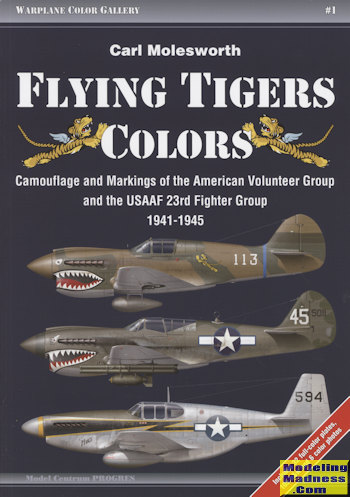 It is somewhat
ironic that probably the best known American squadron of WWII was in what was
basically a backwater of WWII. Of course I'm talking about the Flying
Tigers/23rd Fighter Group who operated in the bottom of the supply chain, the
China-Burma-India (CBI) theater of operations. Undoubtedly made even more famous
by the grossly inaccurate WWII propaganda film starring John Waye,
The Flying Tigers. About the only thing that
movie got right was that they were flying P-40s and during most of the war, from
China.
It is somewhat
ironic that probably the best known American squadron of WWII was in what was
basically a backwater of WWII. Of course I'm talking about the Flying
Tigers/23rd Fighter Group who operated in the bottom of the supply chain, the
China-Burma-India (CBI) theater of operations. Undoubtedly made even more famous
by the grossly inaccurate WWII propaganda film starring John Waye,
The Flying Tigers. About the only thing that
movie got right was that they were flying P-40s and during most of the war, from
China.
The Tomahawks that the Flying Tigers started with were
originally built for the British, but sent to the Chinese Air Force in India and
then Burma. Part of the deal was that the British would get the more modern
P-40E in exchange for these early Alison engine versions. The unit was divided
into three squadrons and initially numbered according to which squadron it was
with. The unit was formed in mid 1941 using seconded US military personnel and
set up at a British base in Burma. The unit was still in training during the
attack at Pearl Harbor and flew its first combat mission, a recce, on 10
December 1941.
After some success, which was heavily covered by the
press during the dark days of 1942, the unit became the 23rd Fighter Group on 4
July 1942 and continued the fight until the end of the war. Always having to
make do with near obsolete equipment, the 23rd was able to successfully combat
the even more stretched out Japanese using the strength of their airframe and
proper tactics. Even during 1944 when the Japanese made their greatest progress
in China, forcing units of the 23rd to abandon bases, they were successful. This
advance did not do the Japanese well as like a dog who chases a car and then
catches it, the Japanese did not know what to do with all the territory it
conquered and slowly retreated.
Meanwhile the 23rd continued to get newer and newer
aircraft, the glut of modern fighters finally catching up with the CBI in the
last year of the war.
In this book, the author, an expert on the P-40 and US
operations in the CBI, chooses to have a look at the camouflage and markings of
the planes which made up the Flying Tigers. This is done with a goodly number of
period photos, some in color, as well as a section on full color profiles and
information on the various paints used during this time. One of the more
extensive appendices lists every known plane by serial number. This includes the
unit with which it flew and the pilot where known. An oddity of the CBI and even
the southwest Pacific in general, is that units painted over the serial number,
which can't have made research easy. A final page shows the various color
combinations used by these aircraft.
In all, it makes for a superb read and a book that I
found quite interesting. Of course, I'm a fan of both the P-40, the CBI, and
Carl's work so I may be biased, but I do believe that you will find it worth
picking up. Highly recommended.
July 2016
Review book courtesy of
www.modelbooks.republika.pl
Though the book is not yet listed, it should be quite soon.
If you would like your product reviewed fairly and
fairly quickly, please contact
the editor or see other details in the
Note to
Contributors.
 It is somewhat
ironic that probably the best known American squadron of WWII was in what was
basically a backwater of WWII. Of course I'm talking about the Flying
Tigers/23rd Fighter Group who operated in the bottom of the supply chain, the
China-Burma-India (CBI) theater of operations. Undoubtedly made even more famous
by the grossly inaccurate WWII propaganda film starring John Waye,
The Flying Tigers. About the only thing that
movie got right was that they were flying P-40s and during most of the war, from
China.
It is somewhat
ironic that probably the best known American squadron of WWII was in what was
basically a backwater of WWII. Of course I'm talking about the Flying
Tigers/23rd Fighter Group who operated in the bottom of the supply chain, the
China-Burma-India (CBI) theater of operations. Undoubtedly made even more famous
by the grossly inaccurate WWII propaganda film starring John Waye,
The Flying Tigers. About the only thing that
movie got right was that they were flying P-40s and during most of the war, from
China.